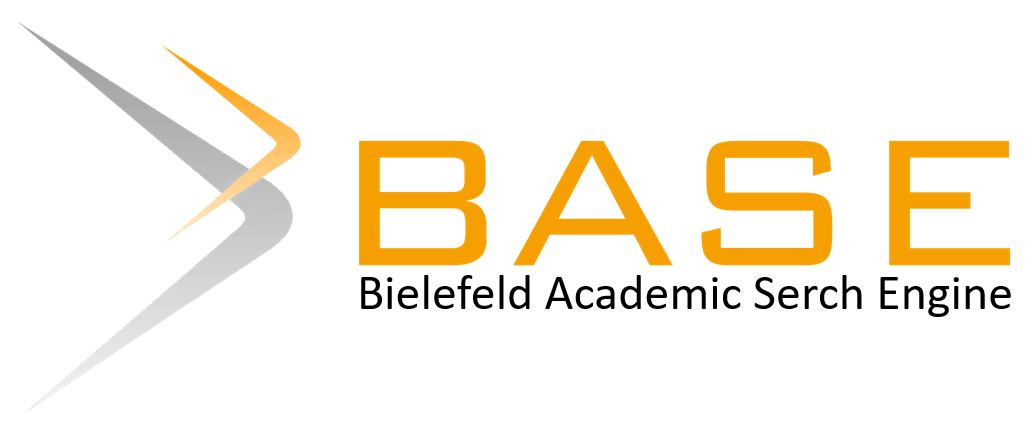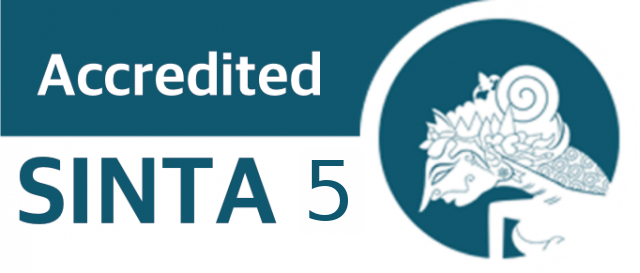Vasodilation Effects of Ketapang (<i>Terminalia catappa</i> Linn) Fruit on Aortic Rings Rat
DOI:
https://doi.org/10.30595/hmj.v7i1.21626Keywords:
Terminalia catappa, fruit, vasodilation, aortic ring, bioassay.Abstract
Hypertension is an important risk factor for cardiovascular disease. Hypertension requires long-term treatment to keep blood pressure under control. Exploration found that antihypertensive drugs have economic value. East Kalimantan is rich in medicinal plant diversity and needs to be explored to discover new drugs for hypertension. Ketapang fruit (Terminalia catappa Linn) has the potential to have a vasodilation effect so research is needed to explore vasodilation activity in vitro. This research to determine the vasodilation activity of Terminalia catappa fruit using isolated aortic ring bioassay. Twelve Wistar rats were used for bioassays isolated aortic ring with endothelium.  The aortic rings is precontracted with phenylephrine. This study used two test groups, Control group and Terminalia catappa fruit ethanol extract group (FTC). The FTC and Control concentrations were given cumulatively in chamber of isolated aortic ring. Log concentration -2 FTC (-11.8 ± 3.5)% and Control (0.0 ± 0.0)%, p = 0,002; log concentration -1,5 FTC (-22.8 ± 2.5)% and Control (0.0 ± 0.0)%, p = 0,002; log concentration -1,0 FTC (-41.5 ± 2.8)% and Control (0.0 ± 0.0)%, p = 0,002; log concentration -0,5 FTC (-58.7 ± 3.1)% and Control (0.0 ± 0.0)%, p = 0,002; log concentration 0 FTC (-79.0 ± 3.4)% and Control (0.0 ± -1.9)%, p = 0,001; log concentration 0,5 FTC (-93.8 ± 3.0)% and Control (0.2 ± 1.5)%, p = 0,002. FTC causes vasodilation in isolated rat aortic rings with endothelium.
References
1. Sherwood L. Human Physiology From Cells to Systems. 9th ed. Vol. 6. 2016.
2. Saadah S. Sistem Peredaran Darah Manusia. 2018. 1–58 p.
3. Klabunde RE. Cardiovascular Physiology Concepts. 2nd ed. Philadelphia: Wolters Kluwer; 2012. 243 p.
4. Kosasih A, Lukito AA, Soenarta AA, Tiksnadi A, Kuncoro AS, Anantaria C. Konsensus Penatalaksanaan Hipertensi 2019. Indonesian Society Hipertensi Indonesia. 2019. 1–90 p.
5. Regulski M os., Regulska K, Stanisz B, Murias M, Gieremek P, Wzgarda A, et al. Chemistry and Pharmacology of Angiotensin-Converting Enzyme Inhibitors. Curr Pharm Des. 2014;21(13):1764–75.
6. Widiastuti TC, Khuluq H, Handayani EW, Wulandari AS, Hemas E, Kurniawan I, et al. Pemanfaatan Tanaman Obat untuk Mengatasi Penyakit Diabetes Melitus di Kota Kebumen. J Farm Klin dan Sains. 2022;2(1):87–96.
7. Khan AU, Gilani AH. Pharmacodynamic Evaluation of Terminalia bellerica for Its Antihypertensive Effect. J Food Drug Anal. 2008;16(3):6–14.
8. Akbari G. Molecular Mechanisms Underlying Gallic Acid Effects Against Cardiovascular Diseases: An Update Review. Avicenna J Phytomedicine. 2020;10(1):11–23.
9. Marjenah, Ariyanto. Tanaman Ketapang (Terminalia catappa Linn.) pada Beberapa Sistem Lahan di Kalimantan Timur dan Prosfeknya sebagai Hutan Tanaman dengan Model Agroforestri. J Penelit Ekosist Dipterokarpa. 2018;4(2):57–70.
10. Dewi P, Putri AR, Bintari SH, Mubarok I. Uji Efektivitas Ekstrak Buah Ketapang (Terminalia catappa) terhadap Bakteri Escherichia coli dan Bacillus subtilis. Life Sci [Internet]. 2022;11(1):47–59. Available from: http://journal.unnes.ac.id/sju/index.php/LifeSci
11. Tew WY, Tan CS, Yan CS, Loh HW, Wen X, Wei X, et al. Evaluation of Vasodilatory Effect and Antihypertensive Effect of Chrysin Through In Vitro and Sub-chronic In Vivo Study. Biomed Pharmacother. 2023;157.
12. Kosala K, Ismail S, Fikriah I, Magdaleni AR. In Vitro Exploration of Vasodilation Activity of the Methanol Extract of the Coptosapelta flavescens Korth Stem. 2017;1(2):10–4.
13. Fikriah I, Ismail S, Kosala K. In Vitro Evaluation of the Vasodilatory Activity of Ethanol Extracts of Eleutherine bulbosa Bulbs and Leaves. J Appl Pharm Sci. 2021;11(5):135–40.
14. Ismail S, Yuniati. Aktivitas Vasodilatasi Pembuluh Darah secara in vitro dan Uji Toksisitas Akut Minuman Fungsional Herbal Kaltim. J Trop Pharm Chem. 2016;3(3):197–201.
15. Hakim AR, Saputri R. Narrative Review: Optimasi Etanol sebagai Pelarut Senyawa Flavonoid dan Fenolik. J Surya Med. 2020;6(1):177–80.
16. Permatasari A, Batubara I, Nursid M. Pengaruh Konsentrasi Etanol dan Waktu Maserasi terhadap Rendemen, Kadar Total Fenol dan Aktivitas Antioksidan Ekstrak Rumput Laut Padina australis. A Sci J. 2020;37(2):78–84.
17. Kurniawidjaja LM, Lestari F, Tejamaya M, Ramdhan DH. Konsep Dasar Toksikologi Industri. Fkm Ui. 2021. 54–73 p.
18. Tortora, GJ & Derrickson B. Tortora, GJ & Derrickson, B. 2014. 1–23 p.
19. Saputra DR, Imansari IP, Elnisa AR, Amania HN, Gigi FK, Jember U, et al. Penggunaan Vasokonstriktor dalam Anestesi Lokal Kedokteran Gigi pada Pasien Kompromis Medis: Telaah Pustaka. Stomatognatic (JKG Unej). 2023;20(1):56–62.
20. Mahajan H, Kolka CM, Newman JMB, Rattigan S, Richards SM, Clark MG. Vascular and Metabolic Effects of Methacholine in Relation to Insulin Action in Muscle. Diabetologia. 2006;49(4):713–23.
21. Hajiluian G, Karegar SJ, Shidfar F, Aryaeian N, Salehi M, Lotfi T, et al. The Effects of Ellagic acid Supplementation on Neurotrophic, Inflammation, and Oxidative Stress Factors, and Indoleamine 2, 3-Dioxygenase Gene Expression in Multiple Sclerosis Patients with Mild to Moderate Depressive Symptoms: A Randomized, Triple-blind,. Phytomedicine. 2023;121:155094.
22. Perumal V, Khatib A, Uddin Ahmed Q, Fathamah Uzir B, Abas F, Murugesu S, et al. Antioxidants Profile of Momordica charantia Fruit Extract Analyzed Using LC-MS-QTOF-Based Metabolomics. Food Chem Mol Sci. 2021;2:4–11.
23. Wang B, Tang X, Mao B, Zhang Q, Tian F, Zhao J, et al. Effects of in vitro Fecal Fermentation on the Metabolism and Antioxidant Properties of Cyanidin-3-O-Glucoside. Food Chem. 2023;431:1–5.
24. da Silva FB, Romero WG, Rouver W do N, Silva K, de Almeida SA, Mengal V, et al. Ellagic Acid Prevents Vascular Dysfunction in Small Mesenteric Arteries of Ovariectomized Hypertensive Rats. J Nutr Biochem. 2022;105(July):2–6.
25. Li W, Chen H, Xu B, Wang Y, Zhang C, Cao Y, et al. Research Progress on Classification, Sources and Functions of Dietary Polyphenols for Prevention and Treatment of Chronic Diseases. J Futur Foods [Internet]. 2023;3(4):289–305. Available from: https://doi.org/10.1016/j.jfutfo.2023.03.001
Downloads
Published
Issue
Section
License
For submission of manuscripts to the Herb-Medicine Journal, the authors must certify that:
I have been authorized by my co-author to submit the manuscript to the Herb-Medicine Journal
I hereby declare, on behalf of myself and my co-authors, that:
The submitted manuscript is original work and has not been published in another peer-reviewed journal or is being considered for publication by another journal. Also, the manuscript does not infringe any existing copyright or other third party rights.
The manuscript does not contain material that may violate the law, slander, or SARA, in any way, violates the terms and conditions contained in the agreement
I/we have taken care that the scientific knowledge and all other statements contained in the manuscript are in accordance with authentic facts and formulas and will not, if followed appropriately, harm the user
No liability shall be assumed by Herb-Medicine Journal, its staff or members of the editorial board for any injury and/or damage to persons or property as a matter of product liability, negligence or otherwise, or from the use or operation of any method, product instructions, advertising , or ideas contained in publications by the Herb-Medicine Journal
Authors who publish in the Herb-Medicine Journal certify that all authors have read and agree to the contents of the Cover Letter or the Terms and Conditions. Plagiarism is strictly prohibited, and by submitting a manuscript for publication, the author agrees that the publisher has the legal right to take appropriate action against the author, if plagiarism or false information is found. Once submitted to the Herb-Medicine Journal, authors will not withdraw their manuscript at any stage prior to publication.
The author owns the copyright and grants the journal rights for first publication with the work simultaneously licensed under a Creative Commons Attribution License which allows others to share the work with acknowledgment of the work's authorship and initial publication in this journal.
Authors may enter into separate additional contractual agreements for the non-exclusive distribution of the published journal version of the work (for example, posting it to an institutional repository or publishing it in a book), with acknowledgment of its initial publication in this journal.
Authors are permitted and encouraged to post their work online (for example, in institutional repositories or on their websites) prior to and during the submission process, as this can lead to productive exchanges, as well as earlier and larger citation of published work (See The Effects of Open Access).
Untuk pengiriman naskah ke Herb-Medicine Journal, penulis harus menyatakan bahwa:
- Saya telah diberikan otorisasi oleh rekan penulis saya untuk memasukkan naskah ke Herb-Medicine Journal
- Saya dengan ini menyatakan, atas nama saya dan rekan penulis saya, bahwa:
- Naskah yang dikirimkan adalah karya asli dan belum pernah diterbitkan dalam jurnal peer-review lain atau sedang dipertimbangkan untuk diterbitkan oleh jurnal lain. Serta, naskah tidak melanggar hak cipta yang ada atau hak pihak ketiga lainnya.
- Naskah tidak mengandung materi yang mungkin melanggar hukum, memfitnah, atau SARA, dengan cara apa pun, melanggar syarat dan ketentuan yang tercantum dalam perjanjian
- Saya / kami telah berhati-hati bahwa pengetahuan ilmiah dan semua pernyataan lain yang terkandung dalam naskah sesuai dengan fakta dan formula otentik dan tidak akan, jika diikuti dengan tepat, merugikan pengguna
- Tidak ada tanggung jawab yang ditanggung oleh Herb-Medicine Journal, stafnya atau anggota dewan editorial untuk setiap cedera dan/atau kerusakan pada orang atau properti sebagai masalah pertanggungjawaban produk, kelalaian atau sebaliknya, atau dari penggunaan atau pengoperasian metode, produk apa pun instruksi, iklan, atau ide yang terkandung dalam publikasi oleh Herb-Medicine Journal
Penulis yang menerbitkan dalam Herb-Medicine Journal menyatakan bahwa semua penulis telah membaca dan menyetujui isi Surat Pengantar atau Syarat dan Ketentuan. Plagiarisme dilarang keras, dan dengan menyerahkan naskah untuk publikasi, penulis setuju bahwa penerbit memiliki hak hukum untuk mengambil tindakan yang pantas terhadap penulis, jika ditemukan plagiarisme atau informasi palsu. Setelah diserahkan ke Herb-Medicine Journal, penulis tidak akan menarik naskah mereka pada tahap apa pun sebelum dipublikasikan.
Penulis memiliki hak cipta dan memberikan hak jurnal untuk publikasi pertama dengan karya yang secara simultan dilisensikan di bawah Lisensi Creative Commons Attribution yang memungkinkan orang lain untuk berbagi karya dengan pengakuan kepengarangan karya dan publikasi awal dalam jurnal ini.
Penulis dapat membuat perjanjian kontrak tambahan yang terpisah untuk distribusi non-eksklusif versi jurnal yang diterbitkan dari karya tersebut (misalnya, mempostingnya ke repositori institusional atau menerbitkannya dalam sebuah buku), dengan pengakuan atas publikasi awalnya di jurnal ini.
Penulis diizinkan dan didorong untuk memposting pekerjaan mereka secara online (misalnya, dalam repositori institusional atau di situs web mereka) sebelum dan selama proses pengajuan, karena dapat menyebabkan pertukaran yang produktif, serta kutipan yang lebih awal dan lebih besar dari karya yang diterbitkan (Lihat The Effect of Open Access).













